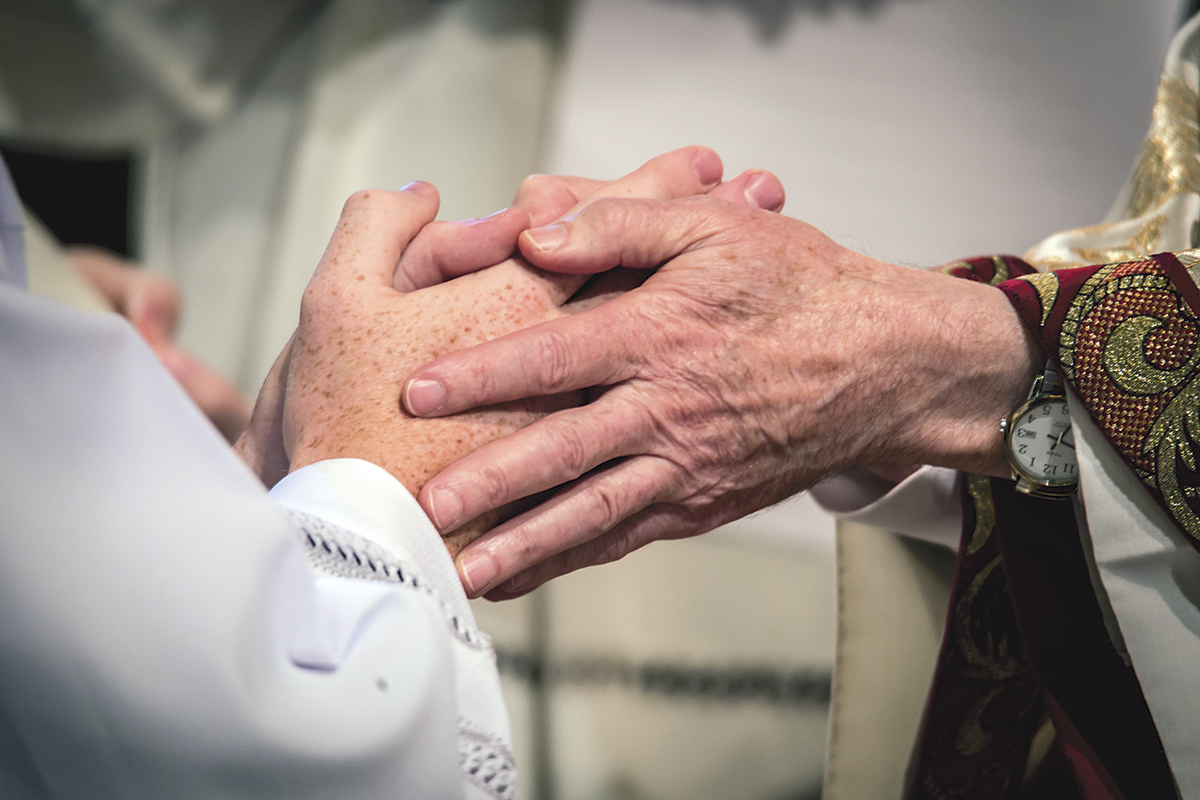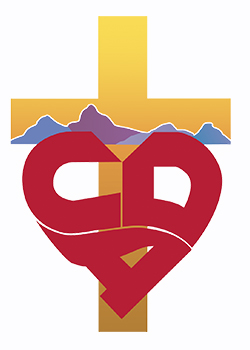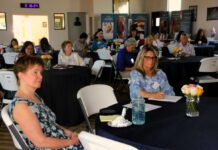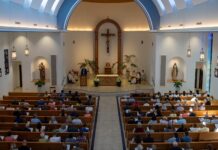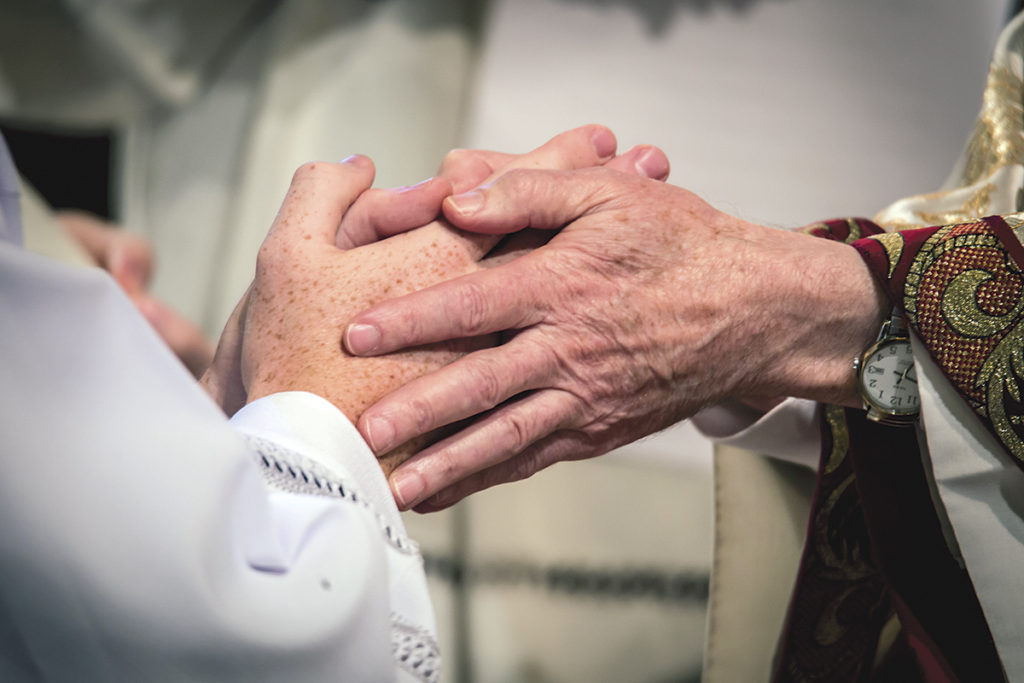
Charity and Development Appeal (CDA)
The CDA supports more than 70 charitable organizations connected to the Diocese of Phoenix.
Info: dphx.org/cda
Donate online
By Gina Keating
The Catholic Sun
All matters of great importance should first be discerned on the knees.
The diaconate is the first of three ranks in ordained ministry, and the priesthood is the second. Both require years of formation and discernment, a process aided by support from the annual Charity and Development Appeal.
There are 32 men representing about 24 parishes throughout the Diocese of Phoenix currently in formation to become permanent deacons.
“The Church sees the deacon as the icon of Christ — the servant,” said Dcn. Doug Bogart, associate director of education and formation for the Office of the Diaconate. “Every Christian is called to serve. Jesus made that very clear.”
By definition of the Church, a deacon is one who “sacramentalizes the Church’s call to service,” he said. It’s a three-fold charism of word, liturgy and charity that speaks more to who a deacon is than what he does. “Wherever there is a need, the deacon is there to serve.”
Most men in formation are married, have families and work fulltime, with the majority entering in their late 40s and early 50s. It is highly recommended, as a prerequisite of sorts, that they first enroll in the Kino Catechetical Institute for the two-year course in Adult Faith Formation and Parish Leadership. Regardless of whether they complete the seven-year formation process, Dcn. Bogart said the Kino experience is invaluable as it makes for stronger lay ministers in the parishes.
The rigorous track for the permanent diaconate isn’t without costs, but because of the generous donations to the CDA, tuition is paid for. Last year the CDA awarded the Office of the Diaconate $161,894 for education, resources and supplies.
SEE RELATED
Two seminarians ordained transitional deacons with heart set for priesthood next year
Each journey is as varied as the men who represent all socioeconomic backgrounds, but there are commonalities; they are actively engaged in their faith, have a desire to serve and grow, have a strong prayer life and are encouraged by others in their parish.
Gary Scott is married, works full time for Maricopa County and is on track to be ordained a permanent deacon in November. He said he is receiving a quality education in ministry and catechesis that is not cost-prohibitive because of diocesan financial support.
“Formation is blended into our work and family and with the CDA supporting it, it makes it affordable to those of us out there working away at life,” Scott said. “The program has been eye-opening for me and a great opportunity to grow in my faith, confidence and discover new skills.”
One of the best ways to foster a vocation in the diaconate or priesthood is prayer.
Fr. Paul Sullivan, diocesan vocations director, has two men in seminary who were ordained transitional deacons May 29 (see p. 10) and four others who were ordained to the priesthood June 11 (see p. 11-14). His office, which received $123,311 from CDA to support men in their six- to nine-year formation program, credits Jesus for the uptick of the 30 men currently in seminary compared to 21 men six years ago.
“We haven’t increased greatly but the Lord has it on the horizon,” Fr. Sullivan said. “We’re blessed. The Lord is taking care of us.”
Among his varied roles is walking beside and working with seminarians during discernment and preparation to the seminary, working with young men who are considering the possibility of a call to the priesthood and helping to educate schools, churches and groups about vocations to the priesthood.
“Parishes and communities need to see where vocations come from — they come from families and churches and there is something wrong if our priests are shipped in from somewhere else,” Fr. Sullivan said.
One book on his recommended reading list is, “To Save a Thousand Souls,” written by a vocations director who prompts the reader to consider all things related to a vocation and shares stories of men and their discernment process.
Fr. Sullivan said the total cost of formation for a priest is as much as $360,000 on the day of their ordination. Calling the financial support from the CDA “crucial,” he also stressed the role the faithful have in their formation.
“It’s also important in a sense that it’s our diocese — priests don’t fall from the sky — and we have a responsibility to participate in their formation and preparation because we are the ones they are going to serve for the rest of their lives,” he said.
Dcn. Timothy Seavey, who is one of those transitional deacons ordained last month and hopes to be ordained a priest next summer, said seminary affords them the ability to “get away from the world and study and pray without worrying about things like looking for a job or working to pay for classes and books.”
“The CDA’s support is so essential so that we can devote our whole selves to God,” he said.
Carrie Aranda, director of parish engagement in the diocesan Office of Stewardship, said the 2016 collection is within $400,000 of its $8.5 million goal. And that is great news for those offices that depend on funding, in particular any young man thinking of
serving Christ.



